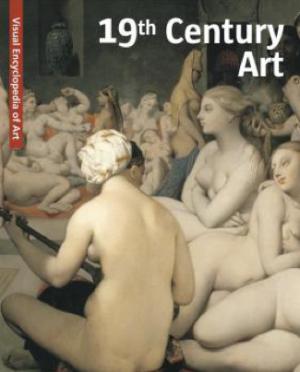
19th Century Art

The Visual Encyclopedia of Art
ISBN 9781566499682 (paperback)
Published in August 2012
The 19th century was a pivotal period in Western history, marked by a revolutionary phase involving not only politics but art and, more broadly speaking, taste. The roots of this change date back to the 1740s, when there was a call for a new kind of art, one that would be useful and educational, both aesthetically and morally, in contrast to the frivolous and “uncommitted” tendency of the Rococo. The new model identified with ancient Greece and Rome; it was believed that through the imitation of antiquity, art could aspire to the ideal beauty of true nature.
The outcomes of such a revolution were unforeseeable and historical events soon came to jeopardize the very system of thought that had given rise to them. Artists’ attention shifted toward a more emotional and personal sphere, Neoclassical “conventions” came to be seen as outworn, while the focus turned to the more intimate aspects of the human soul: fantasy, the unconscious, the relationship between man and nature, and between man and the divine.
These were the earliest, but not the only manifestations of Romanticism: sharp anti-Classical polemics, together with the rise of nationalist movements in Europe, led to the spread of new models, derived mainly from the Middle Ages, which in turn have rise to various revival movements and above all to historical genre painting. This was the soil from which realism was to spring in the mid-19th century.
The superseding of academic conventions, history and war as the theater of action for man represented and the interest in life-as-it-is in the here and now brought about a preference for low-life subject matter. These are just a few pivots in a movement that was to elevate ordinary men and women to the status of new “heroes of modern life.”
The outcomes of such a revolution were unforeseeable and historical events soon came to jeopardize the very system of thought that had given rise to them. Artists’ attention shifted toward a more emotional and personal sphere, Neoclassical “conventions” came to be seen as outworn, while the focus turned to the more intimate aspects of the human soul: fantasy, the unconscious, the relationship between man and nature, and between man and the divine.
These were the earliest, but not the only manifestations of Romanticism: sharp anti-Classical polemics, together with the rise of nationalist movements in Europe, led to the spread of new models, derived mainly from the Middle Ages, which in turn have rise to various revival movements and above all to historical genre painting. This was the soil from which realism was to spring in the mid-19th century.
The superseding of academic conventions, history and war as the theater of action for man represented and the interest in life-as-it-is in the here and now brought about a preference for low-life subject matter. These are just a few pivots in a movement that was to elevate ordinary men and women to the status of new “heroes of modern life.”